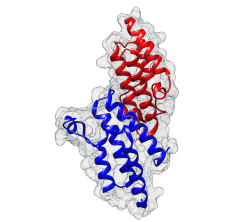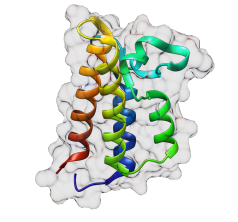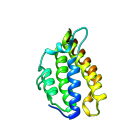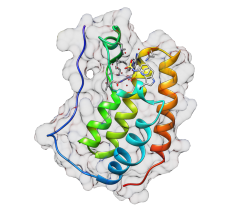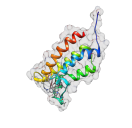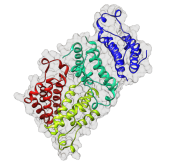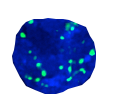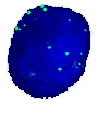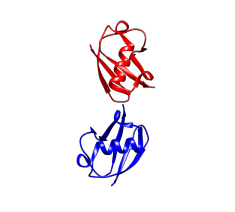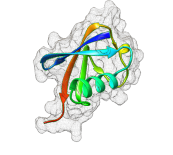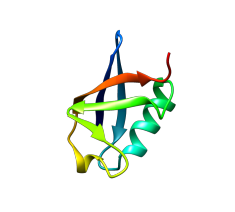Lysine acetylation
Lysine acetylation and methylation were among the first epigenetic modifications reported on histones. Using advanced proteomic technologies, we showed that lysine acetylation targets thousands of histone and non-histone proteins (Choudhary et al., Science, 2009). By combining genetic and proteomic approaches, we showed that acetylation in bacteria occurred through a novel mechanism involving the metabolite acetyl-phosphate (AcP) that can acetylate proteins non-enzymatically (Weinert et al., Mol Cell, 2013). We further showed that acetylation in eukaryotic cells is controlled distinctly in a sub-cellular compartment-dependent manner; and that acetylation of most mitochondrial proteins likely occurs through a non-enzymatic mechanism involving exposure to high concentration of acetyl-CoA in this compartment (Weinert et al., Mol Syst Biol, 2014). We measured the stoichiometry of acetylation using a novel method and showed that most acetylation occurs at a low level, mitochondrial acetylation correlates with the fluctuations in acetyl-CoA levels, and that SIRT3 suppress non-enzymatic acetylation in mitochondria (Weinert et al., EMBO J, 2015). We also investigated the substrates of lysine deacetylases using chemical and genetic approaches (Scholz et al, Nat Biotech, 2015). This work revealed unexpected specificities of several widely used KDAC inhibitors and a possible mechanism by which recently revoked drug bufexamac caused pro-inflammatory adverse effects in patients. Very recently, we combined genetic knockout cells and CBP/p300-specific inhibitors to reveal the landscape of CBP/p300-regulated acetylome (Weinert and Narita et al., Cell, 2018). Our time-resolved acetylome analysis showed that CBP/p300-catalzyed rapid acetylation kinetics is a driver of target gene transcription. Current research in the laboratory is focused on investigating the dynamics and regulatory mechanisms of acetylation.
- 1. Weinert BT*, Narita T*, Satpathy S, Srinivasan B, Hansen BK, Schölz C, Hamilton W, Zucconi BE, Wang W, Liu W, Brickman J, Kesicki EA, Lai A, Bromberg KD, Cole PA, Choudhary C. Time-resolved analysis reveals rapid dynamics and broad scope of the CBP/p300 acetylome. Cell. 2018 May 14. pii: S0092-8674(18)30526-9. [Article][Pubmed]
- 2. Schölz C, Weinert BT, Wagner SA, Beli P, Miyake Y, Qi J, Jensen LJ, Streicher W, McCarthy AR, Westwood NJ, Lain S, Cox J, Matthias P, Mann M, Bradner JE, Choudhary C. Acetylation site specificities of lysine deacetylase inhibitors in human cells. Nat Biotechnol. 2015 Apr;33(4):415-23.[Article][Pubmed]
- 3. Weinert BT, Moustafa T, Iesmantavicius V, Zechner R, Choudhary C. Analysis of acetylation stoichiometry suggests that SIRT3 repairs nonenzymatic acetylation lesions. EMBO J. 2015 Nov 3;34(21):2620-32. [Article][Pubmed]
- 4. Choudhary C, Weinert BT, Nishida Y, Verdin E, Mann M. The growing landscape of lysine acetylation links metabolism and cell signalling. Nat Rev Mol Cell Biol. 2014 Aug;15(8):536-50.[Article][Pubmed]
- 5. Choudhary C, Kumar C, Gnad F, Nielsen ML, Rehman M, Walther T, Olsen JV, Mann M. Lysine acetylation targets protein complexes and co-regulates major cellular functions. Science. 2009 Aug 14;325(5942):834-40.[Article][Pubmed]
- 6. Weinert BT, Iesmantavicius V, Wagner SA, Schölz C, Gummesson B, Beli P, Nyström T, Choudhary C. Acetyl-phosphate is a critical determinant of lysine acetylation in E. coli. Mol Cell. 2013 Jul 25;51(2):265-72.[Article][Pubmed]
References:
